Bronze Lord Krishna: The Divine Presence
Lord Krishna, the revered deity known for his enchanting persona, divine wisdom, and profound teachings, holds a special place in Indian culture and spirituality. Statues of Krishna, especially those crafted from bronze, are sought after for their beauty, durability, and spiritual significance.
The Beauty and Craftsmanship of Bronze Krishna Statues
Bronze statues of Krishna are known for their intricate detailing, radiant finish, and timeless appeal. Bronze, being a durable and elegant metal, has been used in Indian art and sculpture for centuries. The alloy’s ability to capture fine details makes it ideal for depicting the graceful form of Krishna, whether playing the flute, standing in a serene pose, or in a playful form as a child.
Some popular types of Krishna bronze statues include:
- Standing Krishna Playing the Flute: Depicts Krishna in a classic pose, symbolizing divine love and bliss.
- Baby Krishna (Bal Gopal): Shows Krishna as a child holding butter, representing innocence and joy.
- Radha Krishna Bronze Statues: Symbolizes eternal love and devotion, making it ideal for homes and temples.
- Vishwaroop Krishna: Depicts Krishna’s universal form, as revealed to Arjuna during the Mahabharata.
Popular Categories of Bronze Krishna Statues
Lord Krishna, the divine embodiment of love, wisdom, and playfulness, has been an integral part of Indian spirituality and art for centuries. Bronze Krishna statues, known for their durability and intricate craftsmanship, hold a special place in homes, temples, and spiritual spaces. Whether depicting Krishna in his playful childhood form or alongside Radha in a serene embrace, these statues are more than just decor—they are symbols of devotion, prosperity, and positive energy.
From intricately detailed Radha Krishna statues to the joyful presence of Baby Krishna (Bal Gopal) and the grandeur of large bronze Krishna idols, each piece carries a unique significance. In this guide, we explore the most popular categories of bronze Krishna statues and their spiritual benefits, along with tips on placement and selection.
Radha Krishna Bronze Statues
Radha Krishna statues are a symbol of divine love and harmony. Keeping a bronze Radha Krishna idol at home is believed to bring peace, love, and prosperity. These statues are often adorned with intricate carvings, depicting the pair in a serene or playful posture.
Benefits of Keeping Radha Krishna Statues at Home:
- Enhances the spiritual atmosphere of the home.
- Promotes love, unity, and understanding among family members.
- Ideal for puja rooms and meditation spaces.
Placement Tips:
- Always place the Radha Krishna idol in a clean and respectful area.
- Avoid placing it directly on the floor; use a decorative pedestal.
- Ensure that the statue faces east or northeast direction.
Baby Krishna (Bal Gopal) Bronze Statues
The baby Krishna statue, often depicted holding a pot of butter, represents joy, playfulness, and the innocence of childhood. Bal Gopal is considered highly auspicious for homes and is often worshipped during festivals like Janmashtami.
Benefits of Keeping Bal Gopal Idol:
- Attracts positive energy and prosperity.
- Protects the home and its inhabitants from negative influences.
- Brings happiness and a sense of contentment.
Large Bronze Krishna Statues
For those looking to make a grand spiritual statement, large bronze Krishna statues, ranging from 1 foot to 4 feet, are perfect for gardens, large halls, or temple premises. These statues, due to their size and craftsmanship, become the focal point of any space.
Popular Searches for Large Krishna Statues:
- “1-foot Krishna statue online”
- “4 feet Krishna statue online”
When purchasing large statues, ensure they are made by skilled artisans, as the detailing on larger pieces requires precision and expertise.
Unique Themes and Designs in Krishna Statues
Krishna, the divine charmer, has been depicted in countless artistic expressions across time and cultures. From traditional sculptures to regional artistic interpretations, each Krishna statue tells a story—of devotion, mythology, and artistic evolution. Whether it's the cosmic imagery of Krishna with Sheshnag, the rustic beauty of Bastar art, or the intriguing discoveries of Vishnu idols in the Krishna River, these unique designs capture the essence of spirituality in diverse ways.
Beyond their artistic value, Krishna statues hold deep symbolic meaning. Whether playing the flute, holding butter, or standing beside Radha, each pose embodies a profound philosophy. The materials used—ranging from classic bronze and brass to eco-friendly clay and vibrant paper mache—add another layer of significance, making each piece not just a work of art, but a vessel of faith and tradition.
Let's explore some of the rarest and most fascinating Krishna statue designs, each with its own story to tell.
Lord Krishna with Sheshnag
A rare depiction of Krishna shows him with Sheshnag, the serpent king, symbolizing protection and cosmic balance. This theme has deep roots in Hindu mythology, where Sheshnag serves as both the protector and a resting place of Lord Vishnu, of whom Krishna is an incarnation.
Interesting Fact:
There are legends about an avatar of Sheshnag appearing in Kalyug to guide humanity during turbulent times.
Lord Krishna Statues in Bastar Art
Bastar, a region in Chhattisgarh, is famous for its unique tribal metal art. Krishna statues made in Bastar style showcase the deity with rustic charm and minimalistic detailing, giving them an earthy appeal.
Bastar Krishna Temple Mystery:
The Bastar region is known for ancient temples with unique Krishna idols, shrouded in mystery and folklore.
Lord Vishnu Murti Found in Krishna River
Several Vishnu idols have been discovered in the Krishna River, sparking curiosity and reverence. Since Krishna is an avatar of Vishnu, these discoveries are considered highly significant by devotees.
Symbolism and Spiritual Significance of Krishna Statues
- Playing the Flute: Symbolizes spreading love and harmony through divine music.
- Holding Butter: Represents the reward of devotion and innocence.
- With Radha: Embodies the eternal love between the soul (Radha) and the divine (Krishna).
- Universal Form (Vishwaroop): Represents the omnipresence of the divine.
Materials Used in Lord Krishna Statues
While bronze is the most popular material, Krishna statues are also available in:
- Brass: Known for its bright golden hue and durability.
- Clay: Ideal for eco-friendly decor, especially during festivals like Janmashtami.
- Paper Mache: Lightweight and colorful, often used for decorative purposes.
- Ceramic: Elegant and suitable for modern interiors.
- Copper: Revered for its spiritual properties and aesthetic appeal.
How to Choose the Right Lord Krishna Statue for Your Home
Bringing a Lord Krishna statue into your home is more than just a decorative choice, it carries spiritual significance and cultural depth. Whether you seek divine blessings through worship or want to enhance your space with Krishna’s serene presence, selecting the right idol involves thoughtful consideration. From traditional Radha Krishna and Bal Gopal statues for devotion to modern artistic interpretations for decor, the right choice depends on your purpose. Size and material also play a crucial role, compact idols fit well in personal altars, while larger statues make a statement in living rooms or temple spaces. Bronze and brass ensure durability, while clay and papier-mâché add an artistic touch. Let’s explore how to find the perfect Krishna statue for your home.
Purpose
- For worship, choose a traditional Radha Krishna or Bal Gopal statue.
- For decor, opt for artistic or modern interpretations.
Size
- Small idols (under 1 foot) are suitable for personal altars.
- Medium to large statues (1-4 feet) work well in living rooms or temple premises.
Material
- Bronze and brass are ideal for long-lasting statues.
- For a more artistic touch, consider clay or paper mache.
Common Questions About Lord Krishna Statues
Can we keep Lord Krishna idol at home?
Yes, keeping a Krishna idol at home is considered highly auspicious. It brings peace, prosperity, and happiness. Ensure that the idol is placed in a clean and respectful location.
Can we keep Radha Krishna idol in the bedroom?
It is generally advised to avoid placing Radha Krishna idols in the bedroom, as they are best suited for puja rooms or living spaces dedicated to worship.
When was Lord Vishnu born?
Vishnu, as per Hindu beliefs, is Anadi (without beginning) and Ananta (without end). He exists eternally beyond time and space. In scriptures, he is described as the preserver and protector of the universe, manifesting in different forms (avatars) whenever dharma needs restoration. Therefore, Vishnu was never "born" in the conventional sense but is eternally present.
When will Kali Yuga end?
According to Hindu cosmology, Kali Yuga is said to last for 432,000 years, and it began approximately 5,000 years ago. Therefore, it is expected to end in about 427,000 years from now. Predictions about specific dates, such as 2025, are speculative and not based on canonical texts. The end of Kali Yuga will mark the arrival of Kalki Avatar, who will restore righteousness and begin the next cycle of creation.
Which Krishna statue can be kept at home?
You can keep various types of Lord Krishna statues at home, depending on your purpose:
- Radha Krishna statues: Symbolize love and devotion, ideal for puja rooms and living areas.
- Bal Gopal (Baby Krishna) statues: Represent innocence and joy, often kept in homes for prosperity and protection.
- Krishna playing the flute: Denotes peace, harmony, and divine bliss.
When placing a Lord Krishna statue at home, ensure it is in a clean, respectful space, preferably facing east or northeast direction.
Who created Lord Vishnu?
In Hinduism, Lord Vishnu is part of the Trimurti (Lord Brahma, Vishnu, and Shiva) and is considered eternal. None of the deities, including Vishnu, are described as being "created." Instead, they represent cosmic principles—Brahma as the creator, Vishnu as the preserver, and Shiva as the destroyer—who together maintain the universe.
As per Advaita Vedanta and many Hindu texts, Lord Vishnu is a manifestation of the Supreme Brahman, the unmanifested cosmic reality. Lord Vishnu, being an aspect of this ultimate truth, has no creator. He simply "is"—eternal, unchanging, and infinite.
Why did Lord Venkateswara become a statue?
According to legend, Lord Venkateswara (an incarnation of Lord Vishnu) became a statue to fulfill his devotee's wish and continue blessing the world. The story narrates that after his marriage to Padmavati, Lord Venkateswara remained in the form of a stone idol at Tirumala. Devotees believe that he continues to reside in the idol, offering protection and blessings to all who seek him.
Will Kalki be born in 2025?
There is no scriptural evidence to support the claim that Kalki Avatar will appear in 2025. According to traditional texts, Kalki is prophesied to appear at the end of Kali Yuga, which is far in the future. Modern interpretations predicting a specific date are often speculative and not aligned with traditional timelines.
Will Lord Krishna come again in Kalyug?
According to the Bhagavata Purana, Lord Krishna's return is not directly mentioned. Instead, it speaks of Kalki Avatar, the final incarnation of Lord Vishnu, who will appear at the end of Kali Yuga to restore dharma. While Lord Krishna may not return in the same form, the essence of his teachings and divine presence continues through various forms of devotion and spiritual practice.
A bronze Lord Krishna statue is not just a decorative piece but a symbol of divinity, love, and eternal bliss.
Whether it's a small Bal Gopal idol for your personal altar or a large Radha Krishna statue for a grand display, these statues capture the essence of Lord Krishna’s multifaceted persona. Choosing the right statue involves understanding its symbolism, craftsmanship, and how it resonates with your spiritual and aesthetic sensibilities. Embrace the timeless charm of bronze Krishna statues, and let them inspire peace, devotion, and positivity in your life.
FAQ
According to Shakta viewpoint, the MahaLaxmi or the Supreme Goddess gave rise to three pairs of divine siblings -
• Brahma and Laxmi (or Lakshmi)
• Vishnu and Uma
• Shiva and Saraswati
Also, the paani-grahan ceremony of Goddess Parvati was performed by Lord Vishnu. He also did Kanyadaan of Mahatriprisundari to Lord Mahakaleshwar. Moreover, it is believed that Parvati was born at the house of Nanda and was sacrificed in place of Krishna.
Lord Vishnu plays an important role as the protector of the universe and often returns to earth to protect against troubles and problems. He helps to reduce the trouble on the earth and restore the balance between good and bad. His incarnations often have served their purpose on the earth and it is believed that He will again reincarnate on the earth to save it in 2025 CE.
In the same essence, Lord Vishnu has more than 1000 names and he is known by more than one name.
As per Vedas and Upanishads, these names refer to the supreme lord or the Parmatama.
Krishna is an avatar of Lord Vishnu and the Narayana is the part of the half of Nara-Narayana.
Lord Venkateswara is one of the chief deities of South India and is known by various other names. Lord Venkateswara is also the presiding deity of Tirumala Venkateswara Temple at Tirupati Balaji.
His appearance is immeasurable and has 10 Avatar but all are not the same. Among the other names of Vishnu, the prominent are Vasudeva Shri Krishna, Narayana and Hari.
It is believed that the Trinity - Brahma, Vishnu and Mahesh often give rise to each other and are a single entity with different purposes.
On the other hand, Shiva and Vishnu are a form of each other. One cannot exist without the other as their powers of protection and destruction go hand in hand.
On other hand, some believe that since Lord Vishnu is all pervasive and omnipresent, He is shown as blue to depict that He is omnipresent and infinite like the sky. In Vedas and Puranas, Narayana is depicted as having divine blue shades of water filled clouds and has a lotus and Shankha in His hand.
Lord Vishnu or PalanKarta meaning sustainer, protector and preserver - creates universe from Himself. He existed before the creation of the universe and everything will become a part of Him.
Vishnu Puran asserts that after pralaya takes place, only Vishnu survived and then helped to restore the divine balance. Lord Vishnu contributed to the resurrection of the universe by giving birth to Brahma from the navel.
If you wish to worship Lord Vishnu then you can perform puja using water, fruits, flowers, etc. Incense sticks can be placed near his statue. His statue must face the east side and must have a lot of Tulsi leaves. This is because He loves Tulsi a lot.
To thank Him for his undying love and prosperity, Thursdays are observed as the fasting days for Lord Vishnu and his incarnations. Pujas are conducted using milk, ghee, etc. The devotees need to eat food made from milk products only once on this day.
Even God's like Indra, Varuna, Vayu, etc. do not die. Since all the God's have celestial bodies, they lack bones and skins and remain immortal. Then they merge into the universal body of Narayana and they remain free from disease and death.
However, the life-span of Lord Vishnu spans 311.04 trillion human years and the same is one breath of Vishnu. When He exhales, thousands of universes emerge and one Brahma is reborn in each universe.
The Ascending of the Kali Yuga
The ascending of the Kali Yuga (the current epoch in which they are presently living) will end in 2025 CE. The manifestation of the next Yuga (the ascending of Dwapar Yuga) will occur in 2325 CE, with a transitional period of 300 years. It is expected that Vishnu will take the avatar of Kalki.
Kalki Avatar
In Hinduism, avatars are divine incarnations of gods or deities. Avatar, come to Earth to restore harmony and righteousness. One of the most anticipated avatars is Kalki, Lord Vishnu's ninth and last incarnation. Kalki is the avatar who will conclude the Kali Yuga. It will play a vital role in defeating evil forces and ushering in a new age of righteousness known as Satya Yuga. Kalki's avatar is essential as the herald of cosmic order and spiritual enlightenment.
Significance and Prophecy of Kalki Avatar
Kalki avatars play an essential role in Hinduism. He is the last avatar of Lord Vishnu, a significant Supreme Being. Kalki's entrance is noteworthy. He will appear when things are at their worst, such as during the Kali Yuga, a period of moral decay. His presence represents a new beginning after chaos. Many ancient traditions foresee his arrival. Kalki is depicted as a mighty warrior riding a white horse and carrying a sword. People think he would end the Kali Yuga and usher in a new, better period known as Satya Yuga. Various Hindu literature provides different interpretations of these prophesies.
Story and Origins of Kalki Avatar
The tale of Kalki avatar's birth begins with a Brahmin called Vishnuyasha and his wife, Sumati. They resided in the hamlet of Sambhala. Vishnuyasha pleaded to Lord Vishnu for a son, and Kalki was born. As a kid, Kalki showed exceptional abilities and knowledge. He grew up in a magnificent setting, surrounded by sages and spiritual teachings. He carries a strong sword called Nandaka and rides a white horse named Devadatta. Kalki has phenomenal strength, knowledge, and supernatural talents. He is well-equipped to defeat evil and restore righteousness.
Interpretations and Variations of Kalki Avatar
Different people have various views on why the Kalki avatar is valuable. Some believe he will return to save the world from bad times. He will bring in a new period of goodness. Scholars are debating what Kalki will do and how he fits into Hindu beliefs. Different Hindu texts have various accounts of Kalki. Despite the variances, the stories share some fundamental aspects, such as his role as a hero and source of hope. The Kalki avatar is a multifaceted figure with several interpretations in Hinduism.
Predictions, Astrology, and the Year 2025
Various theories are prevalent about when the Kalki avatar will be born. Some believe it is in the far future, while others say it is closer. Prophecies state warning signs that will appear before Kalki's coming. There will be signs of moral degradation and turmoil. His birth is very significant since it coincides with cosmic occurrences. People analyze the significance of 2025. They are wondering if it will represent a turning point. Many expect favorable improvements or divine intervention and spirituality linked to 2025.
Role of Kalki Avatar in Restoring Dharma
Kalki Avatar has a great mission: restore Dharma, or justice, to the world. He will do this by taking set actions. His purpose is to restore harmony and goodness. When Kalki intervenes, it is for one culture and the entire planet. Kalki’s teachings are about defeating evil and include vital moral precepts. His narrative has timeless lessons that are relevant today. They teach us how to live with goodness and honesty.
Worship, Festivals, and Cultural Impact
There are religious organizations that worship Kalki Avatar. They have particular rites and traditions to express their love for him. Kalki's followers come from diverse origins. Some have joyful and reverent festivities to honor his birth. There are temples and shrines dedicated to Kalki where people gather to pray and seek favors. Kalki's influence extends beyond religious rituals. It inspires artists to produce paintings and authors to jot stories. Kalki Avatar also encourages musicians to compose tunes.
Kalki Avatar in Comparative Perspectives
According to Hindu teachings, time is cyclical; it repeats itself in cycles. Kalki Avatar fits into this concept. He arrives after a cycle when things are awful and requires repair. His role is more significant in the end of the world; it is also about regeneration and a new birth. Kalki Avatar resembles characters from other religions. They, too, emerge at the end of time. We notice similarities in themes of endings and new beginnings. It provides different takes on doomsday thoughts.
Controversies, Skepticism, and Modern Influences
Kalki Avatar caused a disagreement among Hindus. Some people dispute his existence and role, while others believe in him. Nonbelievers dismiss Kalki's narrative as a myth or folklore. Despite criticism, Kalki's narrative inspires modern spirituality. It motivates people to think about righteousness and divine intervention. The story of Kalki has sociological and cultural importance. It influences narratives and ideals throughout the Hindu community.
Folklore, Legends, and Cultural Traditions
Regional distinctions exist in how people narrate myths and folklore about Kalki Avatar, resulting in global variances. Famous Kalki legends differ by location, each having twists and interpretations. Many literary works inspired by Kalki's narrative explore courage and divine intervention themes. Artists make music and art inspired by Kalki Avatar, conveying his soul in many forms. Kalki Avatar is often mentioned in mainstream culture. It is in the form of films, television series, and other media that keep his narrative alive in the present era.
Reincarnation and Spiritual Significance
Hindus believe in reincarnation. Kalki Avatar's recurrent nature is significant. It reminds us of the everlasting cycle of life and death. By contemplating Kalki Avatar's tale, we can receive spiritual insights. It teaches us righteousness, courage, and the fight against evil. Understanding this cycle can help us grow. This leads us to enlightenment and a stronger connection with the cosmos.
Exploration and Understanding
The exploration of the Kalki Avatar is complex and varied. It delves into many aspects of Hindu beliefs and culture. This exploration will shape how people understand and practice their faith. This encourages a deeper understanding of Hinduism and its rich tapestry of stories. It will help uncover new insights. It will reveal the depth of Hindu spirituality and culture.
Lord Vishnu falls asleep on the Kshir Sagar or the ocean of milk and rests on the Shesha Naga. This day is called the Shayani Ekadashi. He later wakes up on the eleventh of Kartik month called Prabodhini Ekadashi which corresponds with the rainy season in India.
Then at the horizontal level, we must attempt to have relationships with those who share our familial status. These include the relationship between elders, younger ones or siblings. While it is important to sustain horizontal relationships, we must also attempt to boost the relationship with Krishna. The best idea is to harmonize the horizontal and the vertical relationship and seek Vedic wisdom and culture to promote a compatible social structure.
As a fine teacher, He descends into the world again and again to provide kindness and relief to those even if they have offended Him. He also teaches us to live life happily and enjoy each moment without worrying about the future and its consequences.
On the other hand, Lord Krishna had praised the great warrior on several occasions. In the middle of the war, Lord Krishna told Arjuna that Karna was a real warrior and far better than him.
He also said that the meaning of Karma is in the intention and this intention behind any action matters. On the other hand, those who are motivated by the desire for the fruits of action are often miserable and remain anxious about the results of what they do.
Moreover, in this Yuga, the wealth alone will be considered to be the sign of good birth and upbringing. This will override other signs of goodness, proper behaviour and fine qualities. Law and justice will be applied only on the basis of one's power and love will not be the essence of the relations. The success in the business will depend on deceit.
He believed that mindfulness is all about being in the present and being aware about the present. This makes a change in the quality of life. By living in the present and paying more attention to the present can help to improve your mental well-being.
Even though Lord Krishna was the king of Dwarka, he was extremely humble and had tremendous respect for the elders. He was always ready to give pleasure to his parents and teachers.
His teachings are revealed in Mahabharata where Lord Krishna teaches us that when there are no attachments, one can truly love someone else. This is a love that is pure and divine. The sole way to conquer is through love and then He can be gladly conquered.
The divine baby was born in Mathura and on this day, Vasudeva was magically freed from the prison to help save the young Lord. He then exchanged the Lord with the newborn baby of Yashoda and Nanda.
The basin has a length and width of 701 KM and 672 km. The place where the Krishna river meets the sea is called Sagara Sangam. Avanigadda is the city closest to the same. This place defines the part where the river Krishna meets the Bay of Bengal and is called Hamsaladevi.
Since, the same is fed by seasonal monsoons, the river flow undergoes fluctuations all over the year. As a result, its major tributaries are Bhima in North while Tungabhadra in South.
The mighty Krishna River bears the name of Lord Krishna and then takes his blessings only to flow towards Bay of Bengal. As a result, it is the lifeline of four states - Maharashtra, Karnataka, Telangana and Andhra Pradesh.
Krishna River is believed to originate at Krishna Bai Temple in the old Mahabaleshwar. This temple is an ancient Shiva shrine that has a strem emitting from the mouth of a cow. This water then cascades to form Krishna River.
Lord Krishna began his childhood in Vrindavan and then spend a few years in Mathura. Afterwards, till his end, he lived at Dwarka as Dwarakadhish.
He is considered to be the God of love and mythology labels him as a prankster in earlier days while later on He is portrayed as a gentle lover and universal Supreme being.



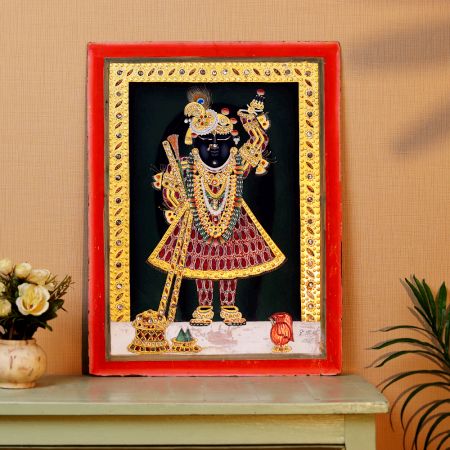


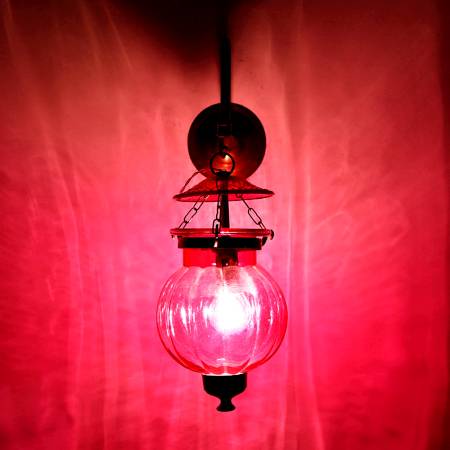
























.JPG?ver=1.7)
.JPG?ver=1.7)
.JPG?ver=1.7)
.JPG?ver=1.7)




.JPG?ver=1.7)
.JPG?ver=1.7)
.jpg?ver=1.7)
.jpg?ver=1.7)
.jpg?ver=1.7)
.jpg?ver=1.7)
.JPG?ver=1.7)
.JPG?ver=1.7)
.jpg?ver=1.7)
.jpg?ver=1.7)
.JPG?ver=1.7)
.JPG?ver=1.7)
.JPG?ver=1.7)
.JPG?ver=1.7)
.JPG?ver=1.7)
.JPG?ver=1.7)
.JPG?ver=1.7)
.JPG?ver=1.7)
.JPG?ver=1.7)
.JPG?ver=1.7)
.JPG?ver=1.7)
.JPG?ver=1.7)
.JPG?ver=1.7)
.JPG?ver=1.7)
.jpg?ver=1.7)
.jpg?ver=1.7)
.JPG?ver=1.7)
.JPG?ver=1.7)
.JPG?ver=1.7)
.JPG?ver=1.7)
.JPG?ver=1.7)
.JPG?ver=1.7)
.jpg?ver=1.7)
.jpg?ver=1.7)
.JPG?ver=1.7)
.JPG?ver=1.7)
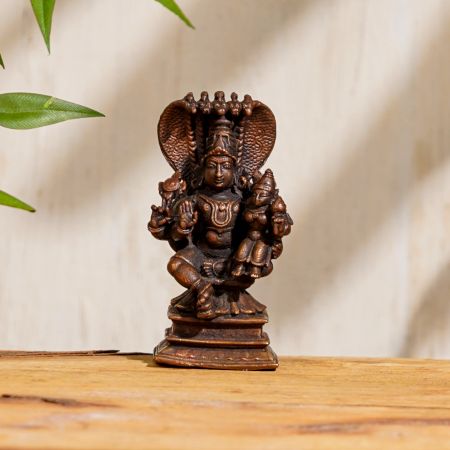

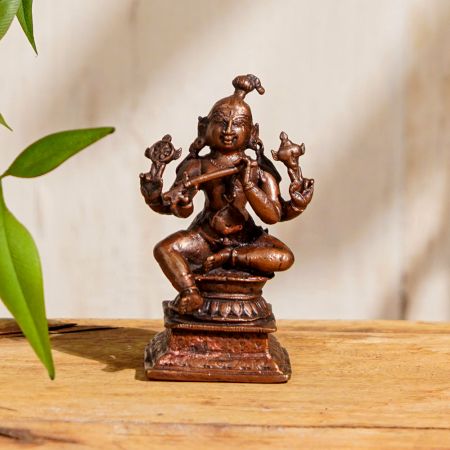

.JPG?ver=1.7)
.JPG?ver=1.7)
.JPG?ver=1.7)
.JPG?ver=1.7)
.JPG?ver=1.7)
.JPG?ver=1.7)
.JPG?ver=1.7)
.JPG?ver=1.7)
.jpg?ver=1.7)
.jpg?ver=1.7)
.jpg?ver=1.7)
.jpg?ver=1.7)
.JPG?ver=1.7)
.JPG?ver=1.7)
.jpg?ver=1.7)
.jpg?ver=1.7)
.JPG?ver=1.7)
.JPG?ver=1.7)
.JPG?ver=1.7)
.JPG?ver=1.7)
.JPG?ver=1.7)
.JPG?ver=1.7)
.JPG?ver=1.7)
.JPG?ver=1.7)
.JPG?ver=1.7)
.JPG?ver=1.7)
.JPG?ver=1.7)
.JPG?ver=1.7)
.JPG?ver=1.7)
.JPG?ver=1.7)
.JPG?ver=1.7)
.JPG?ver=1.7)
.jpg?ver=1.7)
.jpg?ver=1.7)
.JPG?ver=1.7)
.JPG?ver=1.7)


.JPG?ver=1.7)
.JPG?ver=1.7)
.JPG?ver=1.7)
.JPG?ver=1.7)
.JPG?ver=1.7)
.JPG?ver=1.7)
.JPG?ver=1.7)
.JPG?ver=1.7)
.JPG?ver=1.7)
.JPG?ver=1.7)
.JPG?ver=1.7)
.JPG?ver=1.7)
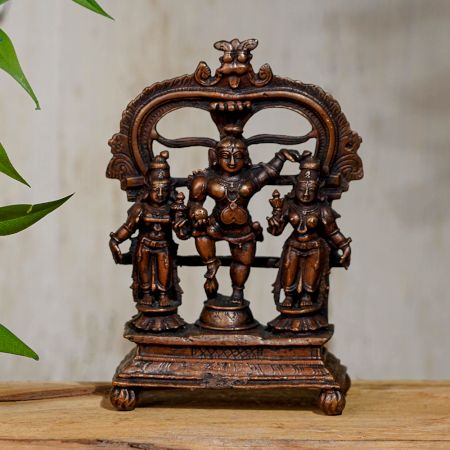

.JPG?ver=1.7)
.JPG?ver=1.7)

.JPG?ver=1.7)
.JPG?ver=1.7)
.JPG?ver=1.7)
.JPG?ver=1.7)
.JPG?ver=1.7)
.JPG?ver=1.7)
.JPG?ver=1.7)


.jpg?ver=1.7)
.JPG?ver=1.7)
.JPG?ver=1.7)
.JPG?ver=1.7)
.JPG?ver=1.7)
.JPG?ver=1.7)
.JPG?ver=1.7)
.JPG?ver=1.7)
.JPG?ver=1.7)
.JPG?ver=1.7)
.jpg?ver=1.7)
.jpg?ver=1.7)
.jpg?ver=1.7)
.jpg?ver=1.7)
.JPG?ver=1.7)
.JPG?ver=1.7)
.jpg?ver=1.7)
.jpg?ver=1.7)
.JPG?ver=1.7)
.JPG?ver=1.7)
.JPG?ver=1.7)
.JPG?ver=1.7)
.jpg?ver=1.7)
.jpg?ver=1.7)
.JPG?ver=1.7)
.JPG?ver=1.7)
.JPG?ver=1.7)
.JPG?ver=1.7)
.JPG?ver=1.7)
.JPG?ver=1.7)
.jpg?ver=1.7)
.jpg?ver=1.7)
.JPG?ver=1.7)
.JPG?ver=1.7)
.JPG?ver=1.7)
.JPG?ver=1.7)
.JPG?ver=1.7)
.JPG?ver=1.7)
.jpg?ver=1.7)
.jpg?ver=1.7)
.jpg?ver=1.7)
.jpg?ver=1.7)
.jpg?ver=1.7)
.jpg?ver=1.7)
.JPG?ver=1.7)
.JPG?ver=1.7)
.JPG?ver=1.7)
.JPG?ver=1.7)
.JPG?ver=1.7)
.JPG?ver=1.7)
.JPG?ver=1.7)
.JPG?ver=1.7)
.JPG?ver=1.7)
.JPG?ver=1.7)
.JPG?ver=1.7)
.JPG?ver=1.7)
.JPG?ver=1.7)
.JPG?ver=1.7)
.jpg?ver=1.7)
.jpg?ver=1.7)
.JPG?ver=1.7)
.JPG?ver=1.7)
.JPG?ver=1.7)
.JPG?ver=1.7)
.JPG?ver=1.7)
.JPG?ver=1.7)
.jpg?ver=1.7)
.jpg?ver=1.7)
.JPG?ver=1.7)
.JPG?ver=1.7)
.JPG?ver=1.7)
.JPG?ver=1.7)
.JPG?ver=1.7)
.JPG?ver=1.7)
.JPG?ver=1.7)
.JPG?ver=1.7)
.JPG?ver=1.7)
.JPG?ver=1.7)
.JPG?ver=1.7)
.JPG?ver=1.7)
.JPG?ver=1.7)
.JPG?ver=1.7)
.JPG?ver=1.7)
.JPG?ver=1.7)
.JPG?ver=1.7)
.JPG?ver=1.7)
.JPG?ver=1.7)
.JPG?ver=1.7)
.jpg?ver=1.7)
.jpg?ver=1.7)
.jpg?ver=1.7)
.jpg?ver=1.7)
.jpg?ver=1.7)
.jpg?ver=1.7)
.jpg?ver=1.7)
.jpg?ver=1.7)
.JPG?ver=1.7)
.JPG?ver=1.7)




.JPG?ver=1.7)
.JPG?ver=1.7)
.jpg?ver=1.7)
.jpg?ver=1.7)
.JPG?ver=1.7)
.JPG?ver=1.7)
.JPG?ver=1.7)
.JPG?ver=1.7)

